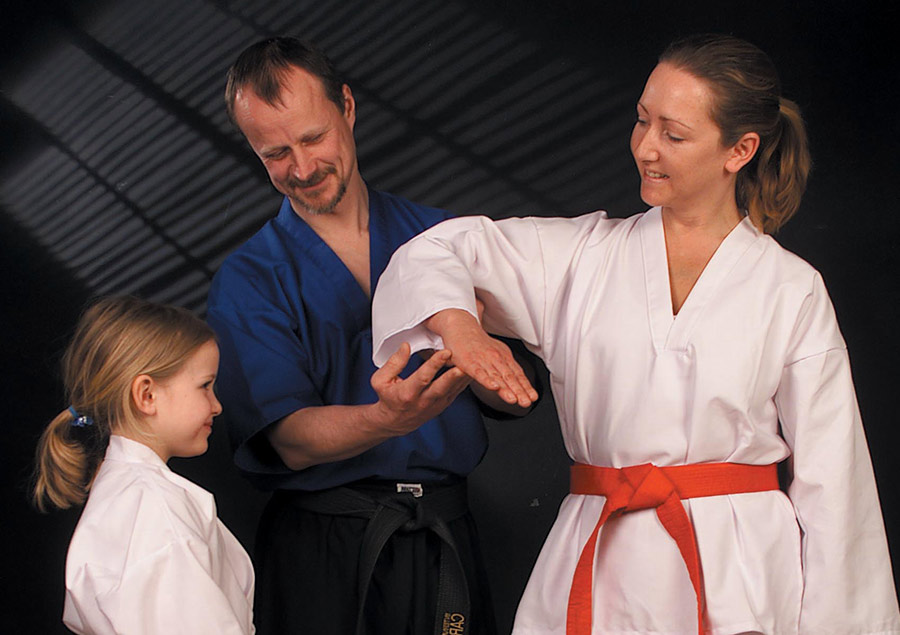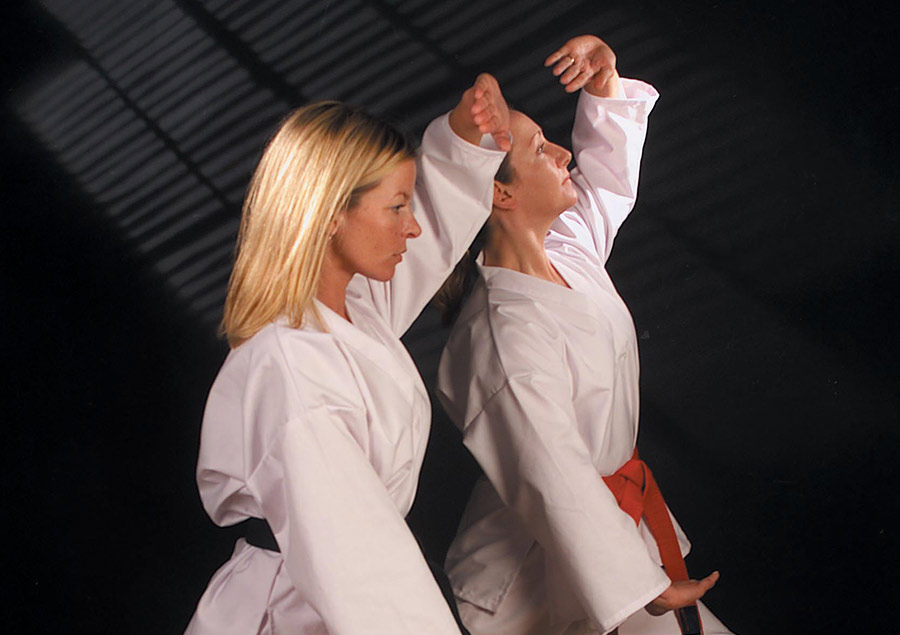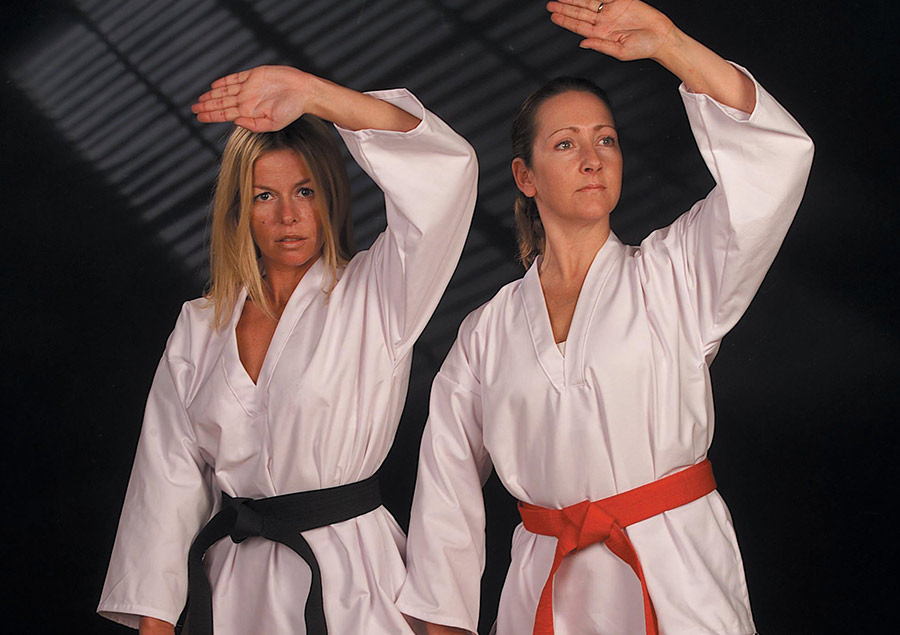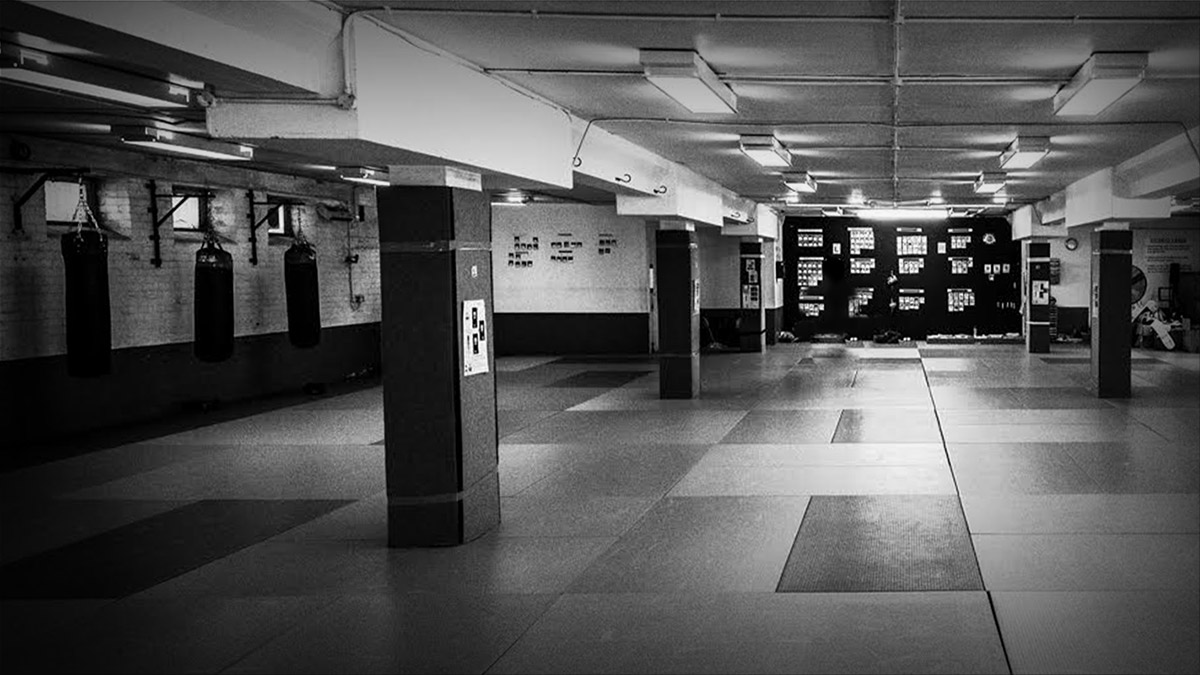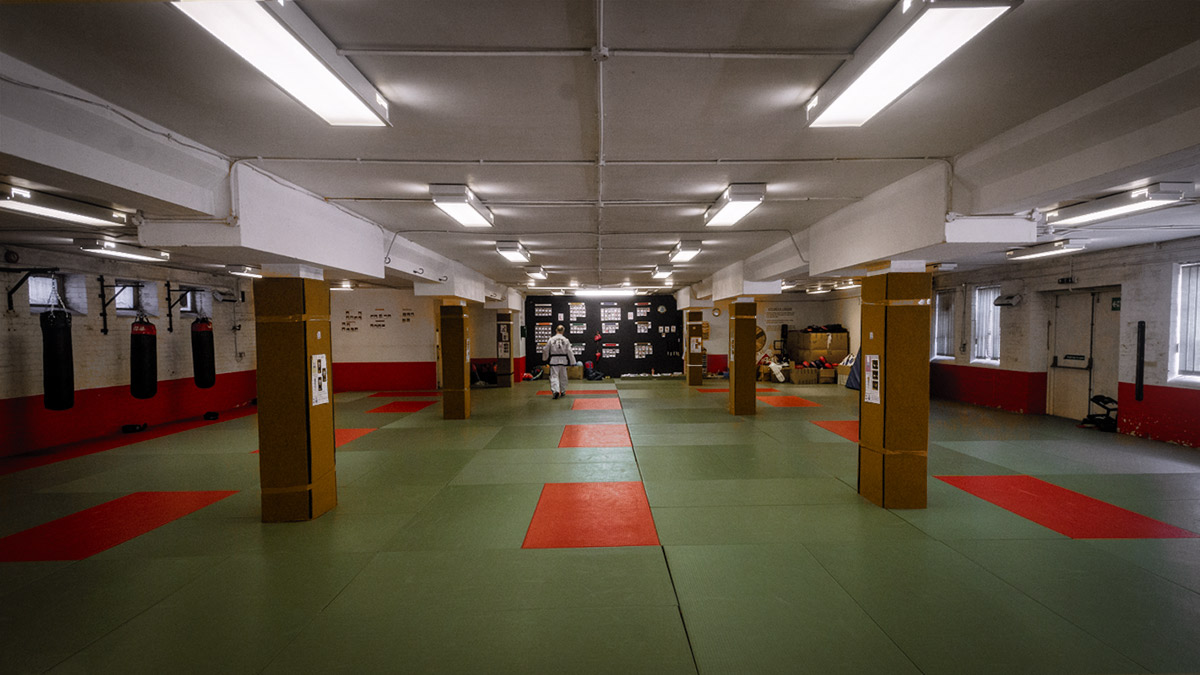How Did Taekwondo Start
Taekwondo is an ancient form of Martial Arts (unarmed combat) practiced all over the world and originates from the Korea by General Choi Hong Hi in 1955....
The formation of Taekwondo
Taekwondo is an ancient form of Martial Arts (unarmed combat) practiced all over the world and originates from the Korea by General Choi Hong Hi in 1955.
Taekwondo is not only an effective, unarmed art of self-defence, but also a competitive sport and a good method of maintaining all-round fitness. Taekwondo is famous not only for it is highly skilled leg techniques but for it is speed and tremendous power, as seen in demonstrations.
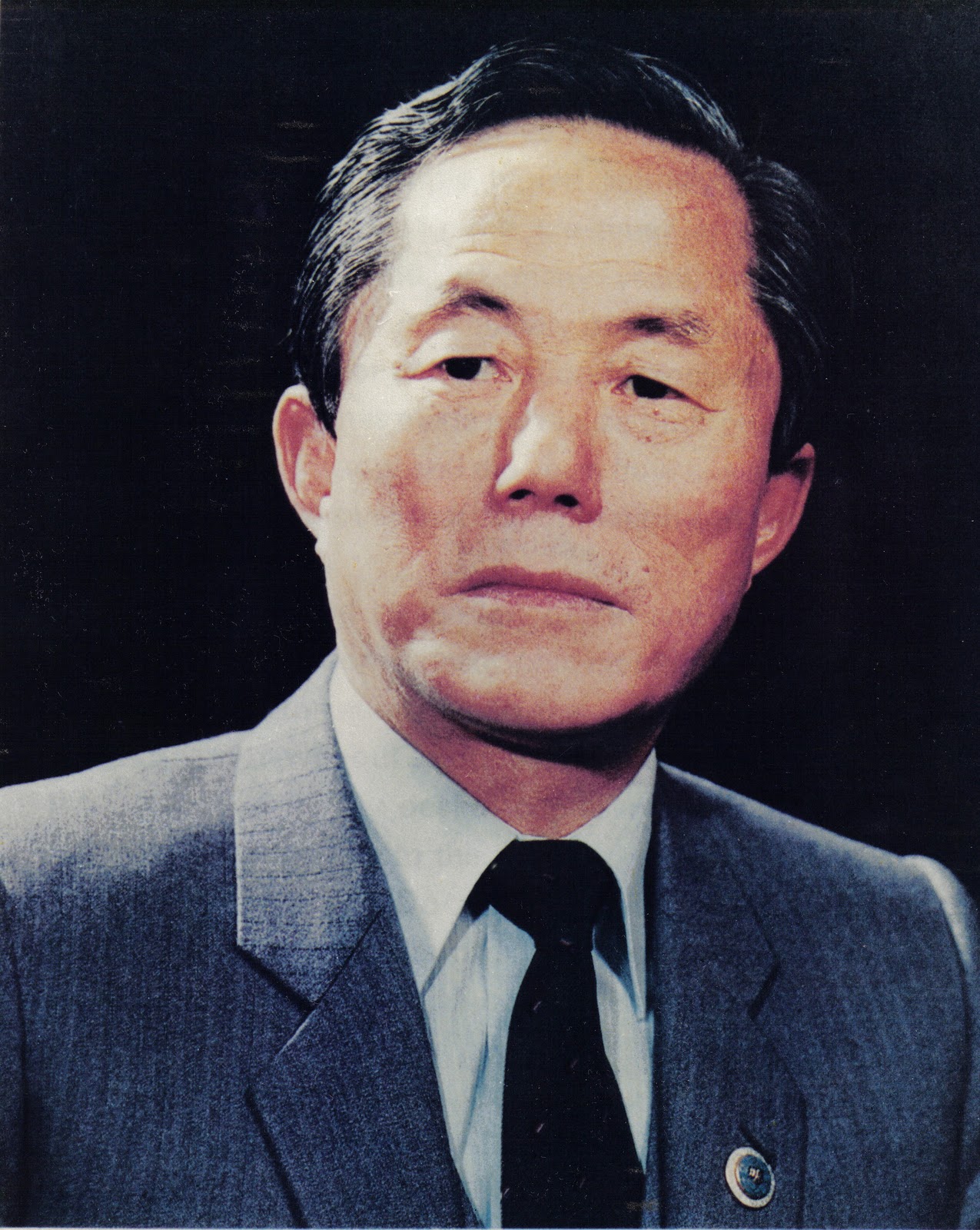
Find us at the Taekwondo Club in Northampton
Cargin Moss Black Belt Academy
Nene Centre
Freehold Street
Northampton NN2 6EW
Grand Master Cargin Moss
01604 722 227
Contact Us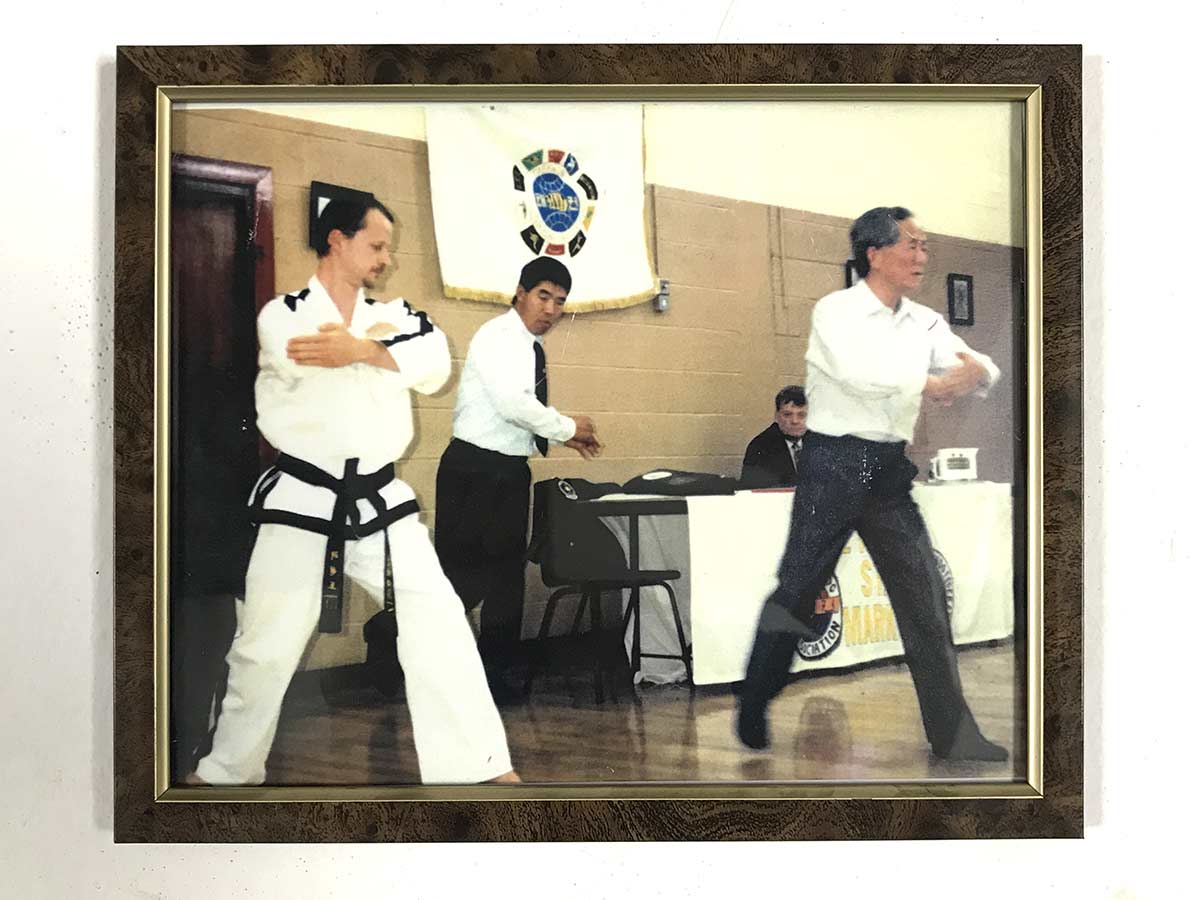
Grand Master Choi Early Life
GM (Grand Master) Choi was born on 9 November 1918 in Hwa Dae, in what is now North Korea. GM Choi originally claimed that his father sent him to study calligraphy under Han Il Dong, who was also "a master of Taekkyeon, the ancient Korean art of foot fighting".
He later recanted this story and said that he never studied Taekkyeon and that it had nothing to contribute to the career. GM Choi travelled to Japan, where he studied English, mathematics, and karate. In Kyoto, he met a fellow Korean with the surname Kim, who was a karate instructor and taught Choi this martial art. GM Choi also learned Shotokan karate under Funakoshi Gichin. Just before he had left Korea, GM Choi apparently had a disagreement with a wrestler named Hu, and the possibility of a future confrontation inspired him to train; in his own words, "I would imagine that these were the techniques I would use to defend myself against the wrestler, Mr. Hu, if he did attempt to carry out his promise to tear me limb from limb when I eventually returned to Korea” Choi attained the rank of 1st dan in karate in 1939, and then 2nd dan soon after.
Military career
GM Choi had been forced to serve in the Japanese army during World War II, but was implicated in a rebellion and imprisoned, during which time he continued practicing martial arts. Following the war, in January 1946, GM Choi was commissioned as a second lieutenant in the Korean army From 1946 to 1951, GM Choi received promotions to first lieutenant, captain, major, lieutenant colonel, colonel, and then brigadier general Choi was promoted to major general in 1954.
Taekwondo
Choi combined elements of Taekkyon and Oh Do Kwan Karate to develop a style of the martial art known as "Taekwondo"; his organisation spelt it Taekwondo, which means "foot, fist, art" or "the way of hand and foot" and it was so named on 11 April 1955.
ITF Taekwondo organisations credit GM Choi with starting the spread of Taekwondo internationally by stationing Korean Taekwondo instructors around the world. Death. Choi died of cancer on 15 June 2002 in Pyongyang, North Korea, where he received a state funeral in the Patriotic Martyrs' Cemetery
Practising the style of Taekwondo, you will find that there are four common disciplines that when combined form the art. These disciplines are Patterns, Sparring, Self-Defence and Destruction (a.k.a. power/ breaking techniques).
The Tenets of Taekwondo
This is the aspect of developing the correct characters the student
At the very heart of Taekwondo are the five traditional Tenets known by all ITF stylist and three more promoted by Master Moss, which help to provide a sort of code of ethics. The one to five Tenets of Taekwondo are (with 6-8 are qualities Master Moss also promotes):
| Courtesy | To be thoughtful and considerate of others. Taekwondo students should be polite, and show consideration for others. |
|---|---|
| Integrity | Integrity describes how you should interact with others. To be honest and good, earn respect and trust. |
| Perseverance | This basically stands for your internal drive. Challenges allow us to improve ourselves and should therefore not be avoided. |
| Self control. | To have control of your body and mind. A Taekwondo student should practice controlling his actions and reactions. |
| Indomitable spirit | To have courage in the face of adversity. A Taekwondo student should never be dominated by, or have his spirit broken by another. |
| Courage | (Bravery) mental or moral strength to confront danger, fear |
| Modesty | (Not boastful) carefully observant of behaviour |
| Humility | (not thinking we are better than others) |
What can Taekwondo offer me?
What are the benefits of Taekwondo?
Whether you're a young 5 year old, or a more mature 60+ year old you can benefit from regular training in Taekwondo.
If you are looking to increase your fitness level, improve flexibility, or build a more healthier and toned body whilst developing a strong character, Taekwondo is definitely for you. We provide training that has been scientifically designed to help you get fit, supple, and stay naturally toned.
No matter if you're an experienced Martial Artist or complete novice, you'll find we have something to offer you, in a safe and friendly environment
Claim Your Free Lesson Here“My daughter was kicked by a boy, to her amazement she went into ‘Automatic’ and blocked his kick, she later said it felt so natural, her defence was sufficient to send the bully away. We are so proud of Sophie but equally thrilled that the lessons you taught. Thank you”
- Testimonial form Mr. Marsh from Wootton Fields
Training Secret of Taekwondo
as written by General Choi Hong Hi
“Under the proper guidance of a competent instructor a student who trains earnestly with dedication will learn the true techniques of Tae kwon-Do in a comparatively short period of time with less effort.
”
| Students should keep in mind the following secrets: |
|---|
| To study the theory of power thoroughly |
| To understand the purpose and method of each movement clearly |
| To bring the movement of eyes, hands, feet and breath into a single coordinated action |
| To choose the appropriate attacking tool for each vital spot |
| To become familiar with the correct angle and distance for attack and defence |
| Keep both arms and legs bent slightly while the movement is in motion |
| All movements must begin with a backward motion with very few exceptions, However, once the movement is in motion it should not be stopped before it reaches the target |
| To create a sin wave during the movement by utilising the knee spring properly |
| To exhale briefly at the moment of each blow except a connecting motion. |
What is a Taekwondo Grading?
What happens at a Taekwondo a belt promotion/ grading?
A belt promotion/ grading is simply a little test of your current knowledge, understanding and capabilities in Taekwondo it defines the level of standard.
When you pass a grading, you progress to the next level and will be given a new belt to reflect your new level and the goal to achieve the next.
There is no maximum time to achieve the next level it is personal and individual, however by goal setting, reviewing and renewing goals you can realistically progress in an effectively period of time.
Taekwondo Pattern or firmly known as a form Chon Ji Form, which we know as Chon Ji Tul
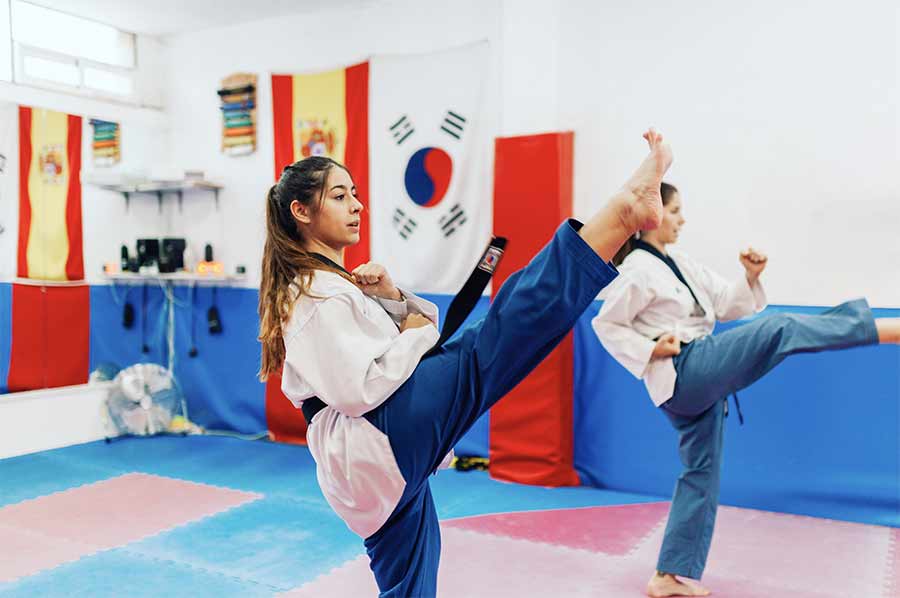
What are patterns?
Popularly known by the Korean term Tul, patterns are basic fundamental movements which are set to a fixed and logical sequence. Most of which represent attack or defence techniques against imaginary opponents. The imaginary opponent is your size enabling you to line up the technique to your stature with the correct height and target as is the design.
Practice Patterns With Us HereWhy train with Taekwondo Patterns (Tul)
…and what do I get out of doing them?
The idea of training with a set range of movements which can be remembered and repeated many times, will only work on enhancing the ability and performance.
Repartition is the mother of all skills, as the move, combination or sequence becomes automatic in performance gives the performer more mental time or concentration to work on the ‘how’ do I improve the technique in power, fluency, speed, effectiveness rather than the ‘what’ technique is next in the sequence.
| Once mastered the sequence the user in encourage to amplify each of the components of power whilst taking note of the: |
|---|
| Training Secret of Taekwondo as written by General Choi |
| Rules to be applied when performing patterns |
| Components of power |
Patterns and Meanings in Taekwondo
Why do we have pattern meanings?
We learn the meanings (interpretations) of patterns to draw inspiration from the people in the pattern who have dedicated and sacrificed themselves for what they believe is right. We should learn to show the same dedication in doing what we feel is right.
The Reason for 24 Patterns (Tul)
“The 24 patterns represent 24 hours, one day, or all my life. The name of the pattern, the number of movements, and the diagrammatic symbol of each pattern symbolises either heroic figures in Korean history or instances relating to historical events."
”- General Choi, Hong Hi
Rules to be applied when performing patterns. (Tul)
The following points should be considered while performing patterns:
| Patterns should begin and end at exactly the same spot. This will indicate the performers accuracy. |
| Correct posture and facing must be maintained at all times. |
| Muscles of the body should be either tensed or relaxed at the proper critical moments in the exercise. |
| The exercise should be performed in a rhythmic movement with an absence of stiffness. |
| Movement should be accelerated or de-accelerated according to instruction from your Instructor. |
| Each pattern should be perfected before moving to the next. |
| Students should know the purpose of each movement. |
| Students should perform each movement with realism. |
| Attack and defence techniques should be equally distributed among right and left hands and feet. |
The progression of patterns with the level of grade (belt ranking)
The Taekwondo Belt Grading System Explained...
As you work and develop the patterns in the order they are set in they progress through the ranks as they are set in the order to relate to the belt rankings.
| To achieve yellow belt | Chon-Ji |
| To achieve yellow belt striped | Dan-Gun |
| To achieve green belt | Do-San |
| To achieve green belt striped | Won-Hyo |
| To achieve blue belt | Yul-Gok |
| To achieve blue belt striped | Joong-Gun |
| To achieve red belt | Toi-Gye |
| To achieve red belt striped | Hwa-Rang |
| To achieve black belt | Choong-Moo |
| First degree to second | Pattern |
| ITF Pattern 10 | Kwang-Gae |
| ITF Pattern 11 | Po Eun |
| ITF Pattern 12 | Gae-Baek |
| Second degree to third | Pattern |
| ITF Pattern 13 | Eui-Am |
| ITF Pattern 14 | Choong-Jang |
| ITF Pattern 15 | Juche |
| Third degree to fourth | Pattern |
| ITF Pattern 16 | Sam-Il |
| ITF Pattern 17 | Yoo-Sin |
| ITF Pattern 18 | Choi-Yong |
| Fourth degree to fifth | Pattern |
| ITF Pattern 19 | Yong-Gae |
| ITF Pattern 20 | Ul-Ji |
| ITF Pattern 21 | Moon-Moo |
| Fifth degree to sixth | Pattern |
| ITF Pattern 22 | So-San |
| ITF Pattern 23 | Se-Jong |
| Sixth degree to seventh (Master level) | Pattern |
| ITF Pattern 24 | Tong-Il |
Step by step moves of the Taekwondo Patterns
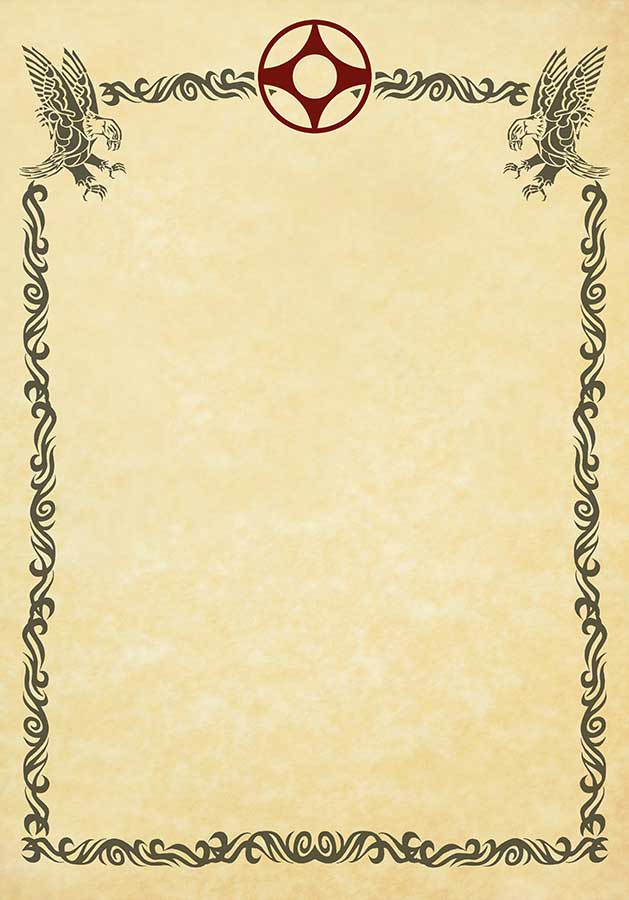
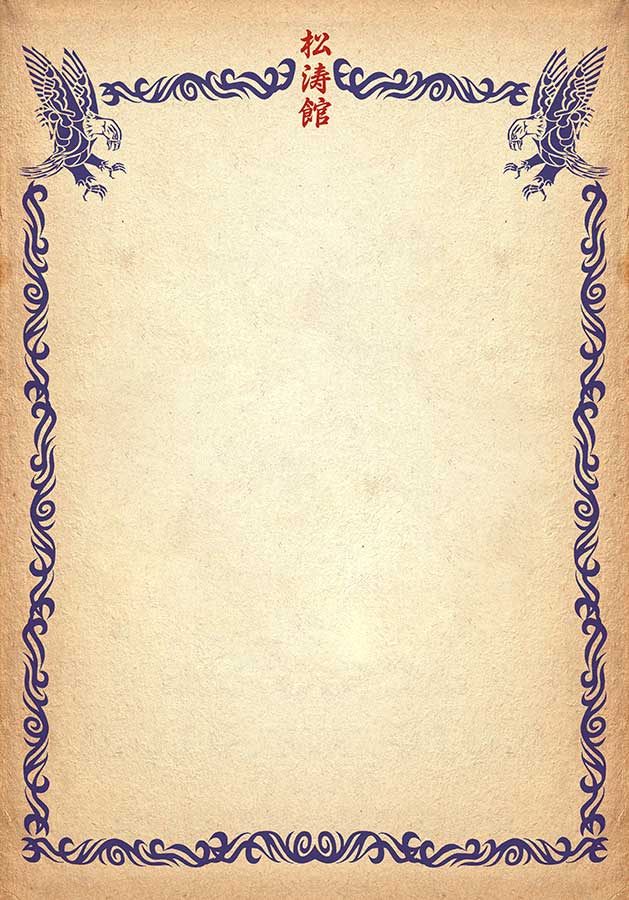
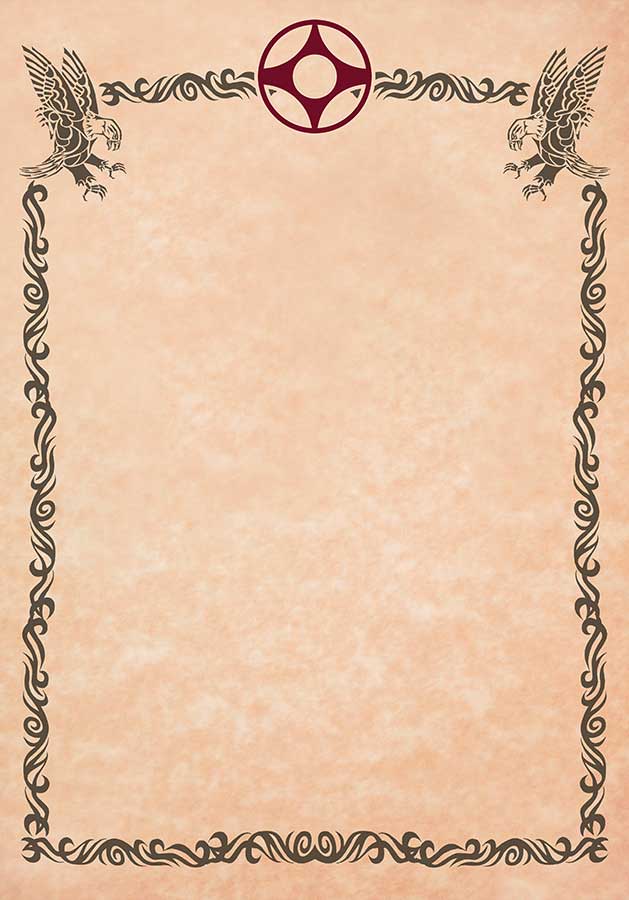

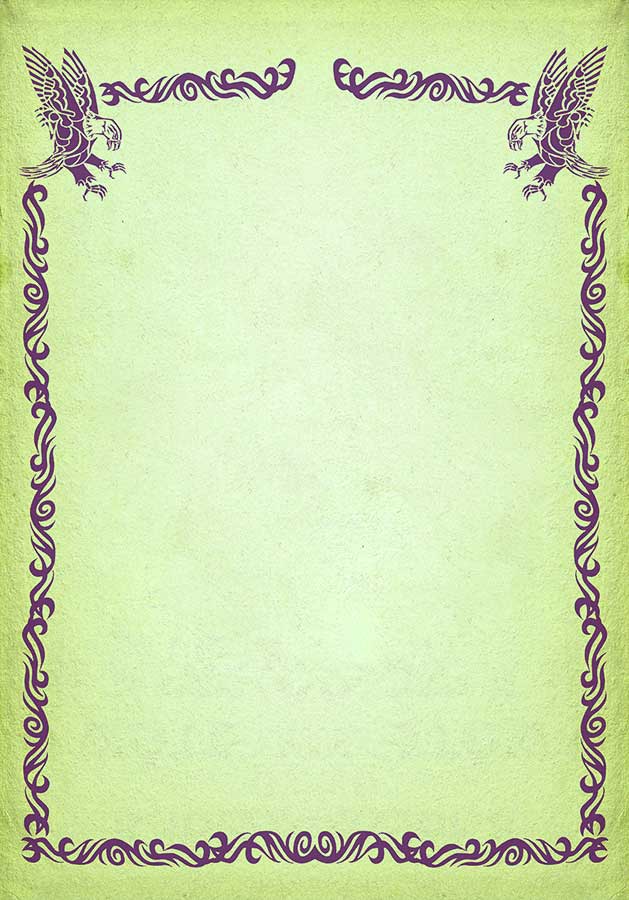

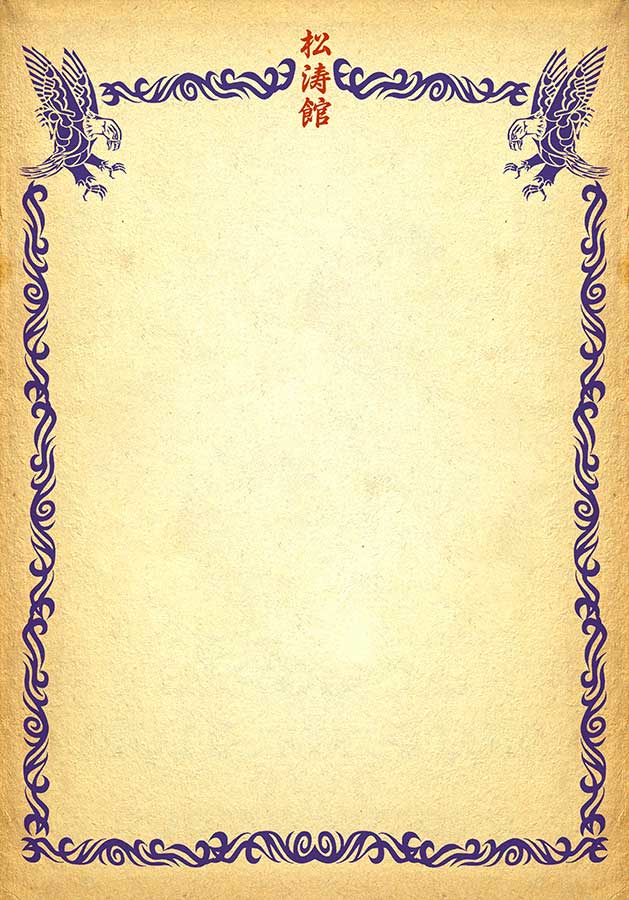




The meanings of the 24 patterns also known as Interpretation of Patterns
Chon-ji: (19 moves)
literally means “heaven and earth”. It is in the orient, interpreted as the creation of the world or the beginning of human history, therefore it is the initial pattern played by the beginner. The pattern consists of two similar parts, part 1: meaning heaven and part 2: meaning earth.
Dan-Gun: (21 moves)
is the name given to the holy Dan-gun, the legendary founder of Korea in the year of 2333 BC.
Do-San: (24 moves)
is the pseudonym of the patriot Ahn Ch’ang-Ho (1876-1938) who devoted his entire life to furthering the education of Korea in its independent movement.
Won-Hyo: (28 moves)
was the noted monk who introduced Buddhism to the Silla-Dynasty in the year 686 AD.
Yul-Gok: (38 moves)
is the pseudonym of the great philosopher and scholar Yi I (1536-1584AD) nicknamed the “Confucius of Korea”. The 38 movements represent his birthplace on 38degrees latitude and diagram represents scholar.
Joong-Gun: (32 moves)
is the named after the patriot An Joong-Gun who assassinated Hiro Bumi Ito, the first Japanese governor-general of Korea, known as the man who played the leading part of the Korea-Japan merger. The 32 movements represent his age when his was executed at Lui-Shung prison (1910).
Toi-Gye: (37 moves)
is the pen name of noted scholar Yi Hwang (16th AD), an authority on neo-confucianism. The 37 movements represent his birthplace on 37degrees latitude and diagram represents scholar.
Hwa-Rang: (29 moves)
is named after the Hwa-Rang youth group which originated from the silla dynasty about 1350 years ago this group eventually became the actual driving force in the unification of the three kingdoms of Korea. The 29 movements refer to the 29th infantry division where Taekwondo developed in to maturity.
Choong-Moo: (30 moves)
was the name given to the great admiral Yi Sun-Sin of the Yi dynasty. He was reputed to invent the first armoured battle ship (Kobukson) which is the precursor of the modern day submarine in 1592AD. The reason the pattern ends on a left-hand attack is to symbolise his regrettable death having no change to show his unrestrained potentiality check by the forced reservation of his loyalty to the king
Dan Grade Pattern Meanings or Interpretations
Ge-Baek: (44 moves)
is named after Ge-Baek of the Baek Je Dynasty (660AD). The diagram represents his strict military discipline.
Po-Eun: (36 moves)
is the pseudonym of a loyal subject Chong Mong-Chu (1400AD) who was a famous poet and whose poem “I would not serve a second master though I might be crucified a hundred times” is known to every Korean. He was also a pioneer in the field of physics. The diagram represents his unerring loyalty to the king and country towards the end of the Koryo Dynasty.
Kwang-Gae: (39 moves)
is picked after the famous Gwang-Gae-T’o-Wang, the 19th king of the Koguryo Dynasty, who regained all the lost territories including the greater part of Manchuria. The diagram represents the expansion and recovery of lost territory. The 39 movements refer to his 39 year reign.
Eui-Am: (45 moves)
is the pseudonym of Son Byong Hi, leader of the Korean independence movement march 1, 1919. The 45 movements relate to his age when he changed the name Dong Hak (oriental culture) to Chondo Kyo (Heavenly Way Religion) in 1905. The diagram represents his indomitable spirit displayed while dedicating himself to the prosperity of his nation.
Choong-Jang: (52 moves)
is the pseudonym given to General Kim Duk Ryang who lived during. the Yi Dynasty, 15th century. This pattern ends with a left hand attack to symbolise the tragedy of his death at 27 in prison before he was able to reach full maturity.
Juche: (45 moves)
is the philosophical idea that man is the master of everything and decides everything. In other words the idea is that man is the master of the world and his own destiny it is said that this idea is noted in the Baek Du Mountains, which symbolise the sprit of the Korean people. The diagram represents the Baek Du Mountains.
Yoo-Sin: (68 moves)
is named after General Kim Yoo Sin, commanding general during the Silla Dynasty, who unified the three separate kingdoms of Korea. The 68 movements refer to the last two figures of 668 A.D., the year Korea was united.
Sam-Il: (68 moves)
denotes the historical date of the independence movement of Korea which began throughout the country on March 1, 1919. The 33 movements in the pattern stand for the 33 patriots who planned the movement.
Choi-Yong: (46 moves)
is named after General Choi Yong, Premier and Commander-in-Chief of the Armed Forces during the fourteenth century Koryo Dynasty. Choi Yong was greatly respected for his loyalty, patriotism, and humility. He was executed by his subordinate commanders, headed by General Yi Sung Gae, who later became the first king of the Yi Dynasty.
Yon-Ge: (49 moves)
is named after a famous general during the Koguryo Dynasty, Yon Gae Somun. The 49 movements refer to the last two figures of 649 A.D., the year he forced the Dang Dynasty to quit Korea after destroying nearly 300, 000 Chinese troops at Ansi Sung.
Ul-Ji: (42 moves)
is named after general Ul-Ji Mun Duk who successfully defended Korea against a Chinese invasion force of nearly one million soldiers led by Yang Je in 612 A.D. Ul-Ji employing hit and run guerrilla tactics, was able to decimate a large percentage of the force. The diagram (z) represents his surname. The 42 movements represents the author’s age when he designed the pattern.
Moon-Moo: (61 moves)
honours the thirteenth king of the Silla Dynasty. His body was buried near Dae Wang am (great king’s rock). According to his will, the body was placed in the sea “Where my soul shall forever defend my land against the Japanese.” It said that the Sok Gul Am (stone cave) was built to guard his tomb. The Sok Gul Am is a fine example of the culture of the Silla Dynasty. The 61 movements in this pattern symbolise the last two figures of 661 A.D. when Moon Moo came to the throne.
So-San: (72 moves)
is the pseudonym of the great monk Choi Hyung Ung, 1520-1604, during the Yi Dynasty. The 72 movements refer to his age when he organised a corps of monk soldiers with the assistance of his pupil Samung Dang. The monk soldiers helped repulse the Japanese pirates who overran most of the Korean peninsula in 1592.
Se-Jong: (24 moves)
is named after the greatest Korean king, Se-Jong, who invented the Korean alphabet in 1443 A.D., and was also a noted meteorologist. The diagram ( ) represents the king, while the 24 movements refer to the 24 letters of the Korean alphabet.
Tong-Il: (56 moves )
denotes the resolution of the unification of Korea which has been divided since 1945. The diagram ( I ) symbolises the homogenous race.
Further development of the patterns
When you have the patterns to a level of proficiency, you then need to focus on enhancing each of the components of power, six in total.
Four of the component of power I refer to as variable (which you can focus on to improve performance of each and every technique with the Speed, Reaction force, Breath Control, Mass)
The two I like to refer to as constant components, how ever you do do need to consistently focus that the are correct and can they be improved (with concentration the correct tool of use, ensuring always correct, equilibrium focusing on balance, stance, the fluency of movement … is important but can not been enhanced like the other components)
The four I like to call variable are Speed, Reaction force, Breath Control, Mass and the two more consistent are Equilibrium, Concentration
The understanding of the six components of power
Reference made partly from General Choi Manuel
Speed
Speed is the most essential factor of force. Mathematically force equals mass times acceleration (F=MA) Force = Mass x (Acceleration) Speed Reaction force, breath control, looseness, relaxation of muscles and concentration cannot be ignored. However, these are the factors that contribute to the speed and all these must be co-ordinated to attain maximum efficiency.
If I drive a car 2 miles an hour into a wall, it may dent the body work, however, drive the same car into the same wall at 50 miles an hour, buy a new car.
Reaction force
According to Newton’s law, every force has an equal and opposite force, if two cars travelling at 30miles per hour hit head on an impact for 60 miles per hours are the result.
If your opponent is rushing towards you at high speed, by the slightest strike to the head the force that strikes his head will be the force of his onslaught plus that of the blow. The two forces combined; his, which is large and yours which is small, are impressive. This then the reaction force from the opponent. Another reaction force is your own.
In techniques: a punch – having a reaction arm pulling back in the opposite motion to the punch (the none punching fist pulls backwards to the hip) whilst your punch is being delivered, this increases the power which is felted once developed.
Test to feel the use of your reaction force:
- Step 1.
- from the starting position of having one fist upset on the hip, extend the punch as fast as possible (without locking out the elbow which only will cause soreness over a period of time) repeat a few times. - Step 2.
- now perform a two-handed punch focusing on pulling the fist back to the hip whilst performing the front punch. This helps the beginning student feel the difference in the early stages.
Breath Control
Controlled breathing not only improves stamina but prepares one body to receive a blow and augment the power of the blow directed against an opponent. through practice breath stopped in the state of exhaling at the critical moment when a blow is landed against a pressure point on the body this can cause loss of consciousness and stifle pain. A sharp exhaling of breathing at the moment of impact and stopping the exhaling during the movement can cause the abdomen to tense and concentrate maximum effort on the delivery of the motion, while slowing the breathing helps the preparation of the next movement.
An important rule to remember always exhale while focusing a block or an attack against an opponent. This will both impede movement and result in a loss of power conduction. Students should also practice disguised breathing to conceal any outward signs of fatigue an experienced fighter will certainly press an attack when he realises his opponent is nearing the point of exhaustion.
Test to feel the use of your breath control:
- Step 1.
- Perform a technique with normal breath (normal resting rate) repeat a few times - Step 2.
- now perform the same technique with accelerated breath (as if using a pea shooter or the letter ’t’ as if in a spit motion, being a short sharp breath from the diaphragm) Question how this feels in increasing power, three different results:- No difference – the timing is off, as after delivery
- Felt weaker/slower – timing off, the breath is before the technique has finished
- Felt stronger – the timing was good the student can feel the reason to continue to develop further.
(This helps the beginning student feel the difference in the early stages.)
Equilibrium
Balances is of upmost importance in any type of athletics. In Taekwondo it is very important. Make sure you always keep the body in equilibrium, that is, well balanced, a technique is therefore more effective and powerful. An unbalanced practiser is easily toppled. The stance should always be stable and flexible for both the offensive and defensive movements.
To maintain good equilibrium, the centre of gravity of the stance must fall on a straight-line mid-way between both legs. When the body weight is distributed equally on both legs. Flexibility and the knee spring are so important in maintaining balance, for both quick attacks and instant recovery.
One additional point: the heel of the rear foot should never be off the floor at the point of impact. This is not only necessary for good balance but also to produce maximum power at the point of impact and a stronger base to prevent rebound causing the perform to lose balance or power.
Test to feel the use of your equilibrium force:
- Step 1.
- Perform an incorrect walking stance (with the rear leg out at 900) extend the arms out straight, with elbows locked, have a partner gentle apply pressure in the same position except in a correct walking stance, feel the balance. - Step 2.
- Now perform the same exercise with both people in a correct walking stance, and feel the difference in stability
Concentration
Everyone thinks this applies to mental discipline which is important to be mental focused the main area in play here is physical. By applying the impact force into the smallest target area, it will concentrate the force and therefore increase its effect. For example, the force of the water coming out of a water hose is greater if the orifice is smaller. Conversely, the weight of a man spread out on snowshoes makes hardly an impression in the snow. The blows in Taekwondo are often concentrated onto the edge of the open palm or Two knuckles opposed to the whole fist. Concentration is done in two ways: one is to concentrate every muscle of the body, particularly the bigger muscles around the hip and the abdomen (which theoretically are slower that the smaller one in the body) to the appropriate tool be used at the proper time and the second way is to concentrate such mobilised muscles onto the opponent’s vital spots. This is the reason why the hip and the abdomen are jerked sharply in any action whether it be attack or defence.
Test to feel concentration of tool of use:
With an open hand slap the palm with moderate force, now with the same force strike with the Knife-hand, immediately the difference can be felt.
(Concentration of the tool of use puts all the force into a smaller impact.)
Mass
Mathematically the maximum kinetic energy of the force is obtained from maximum weight and speed it is all important that the body weight is increased during the execution of a blow. No doubt the maximum body weight is applied with the motion by the hip. The large abdominal muscles are twisted to provide additional body momentum. Additionally, if the hip rotates in the same direction as that of the attacking or defending tool. Another way of increasing body weight is the utilisation of the spring action of the knee joint. This is achieved by slightly raising the hip at the beginning of the motion and lowering the hip at moment of impact to drop the body weight into the motion known as ‘sign-wave’.
In summarising, it is that the principle out in the above are still true today in the modern nuclear age as was used centuries ago. I am sure as you go through this art learning both in theory and in practice, you will find scientific basis of motion and the real power that comes out of a smaller human body cannot fail to impress you. In basic terms, if I step on something I can squash it, if I jump on it you will make a bigger mess of it as I increase the downward mass (increased body weight by acceleration of a down motion)
Sign-wave movement can be:
- Type 1.
- Down movement with heel whist performing forward or outward movement, use of knee spring - Type 2.
- Backward movement - Type 3.
- Radial movement
To use sine wave, moving our centre of mass in the motion, Keep the arms and legs bent during motion, be relaxed increases the power of a technique. allow the centre of mass to travel along a curve, which by definition is another form of acceleration, which then helps to accelerate into a target, drop your body weight downwards at the end of the technique which helps us use gravity to our advantage and keep our acceleration building until the point of impact.
The body drops at the half-way point of the technique, then rises to the maximum height at about the point and then drops rapidly at the end. The rapid drop at the end of the technique helps accelerate our mass into the target using gravity to our advantage
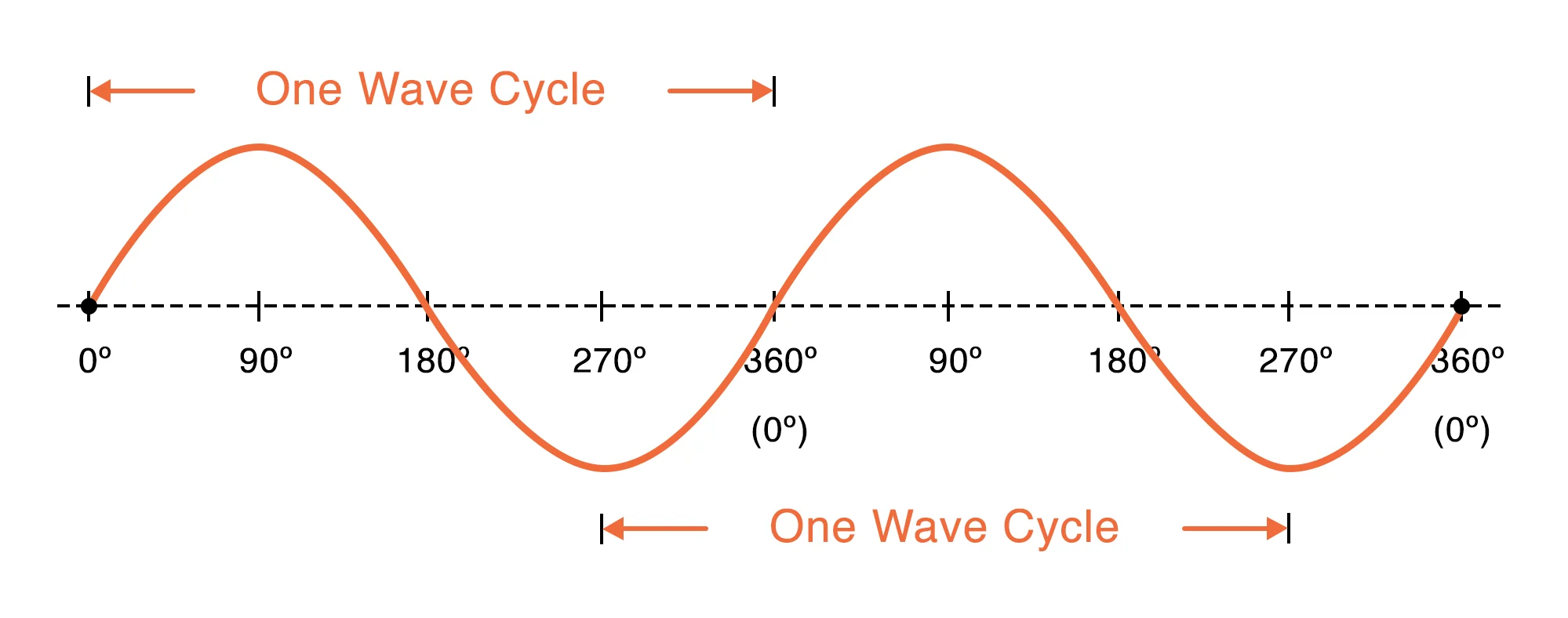
MOTIONS
The basics of sine-wave is down-up-down, in other words there is always a downward motion first, followed by an upward motion, and ending in a downward motion. There are however variations on sine-wave, which are related to the motion, combination and speed of the techniques used.
In traditional Taekwondo, the fundamental exercises and the Tuls there are five different motions:
| Type of Motion | Description of Motion |
|---|---|
| Normal motion | Performed in normal speed, with a complete sine-wave in one breath. |
| Continuous motion | Two movements are consecutively performed, with two sine wave movements during one breath (i.e. Low block, rising block in Dan Gun) |
| Fast motion | Two movements are performed consecutively in fast speed, with two sine-wave and two breaths (i.e double punch) |
| Connecting motion | Two movements are performed in one sine-wave and one breath (i.e palm hooking block, reverse punch in Yul Gok) |
| Slow motion | There is one (slow) movement, one sine-wave, in one breath. Slow motion techniques are meant to learn the student body control and balance |
What Next?
If you would like to know what our students and parents think of the Cargin Moss Black Belt Academy please view some of our testimonials. Don't forget, we offer a FREE TRIAL program for all classes.
The CMBBA Community
We are more than just another martial arts club. We are a community. Many of our members have stayed with the CMBBA family for decades and made strong, long lasting friendships here.
Special Events
We host ‘Birthday’ and ‘Christmas’ parties with the martial arts theme, reduced rates for members and still available to non members details on request. - 01604 722 227
Sheets System
We have a monthly system where our younger students fill out guided sheets to encourage them to practice their newest skills and drills in a structured manner. Our Character Development Program incorporates aspects of how you think and believe helping our young students to grow into progressive members of society.
Our Martial Arts Dojang Is Our Second Home
Here are some pictures from our Academy Training Hall. You can see what our practice space looks like and is fully equipped with everything we need to practice safe martial arts.
